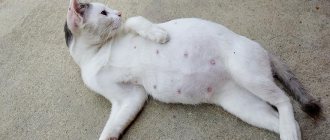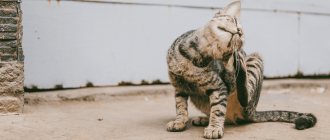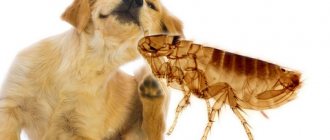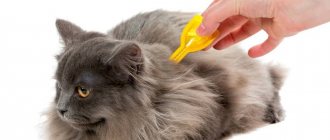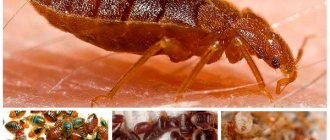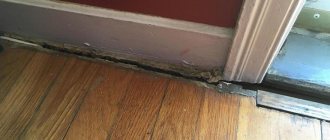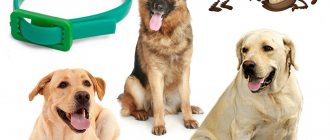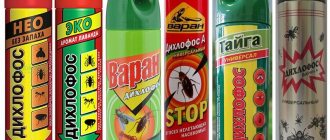Fleas are common parasites even for pets that spend their entire lives in an apartment. People bring parasite eggs from the street on shoes or clothes, and they also get from neighbors through open doors and even windows. If for adult animals fleas are a nuisance that can be quickly dealt with, then for a small kitten it is a problem that poses a threat to health and life.
Insects are carriers of diseases and distributors of helminths, and if there are too many of them, they will “eat” the baby, greatly weakening the body and weakening the immune system. There is only one conclusion - fleas need to be destroyed. But this must be done wisely, because the use of certain products depends on a number of conditions, especially on the age of the kitten.
Symptoms of flea infestation
Small blood-sucking insects look like black grains up to 2 mm long. They move by jumping, sucking blood from the animal, piercing the skin. It is enough for one flea to get on the fur of an animal, and the active process of its reproduction begins.
Kitten in the house
When fleas appear, the pet begins to behave restlessly, itches, and tries to get rid of the insects with its teeth. As a result, wounds form on the skin.
It is not difficult to find fleas on the body. When you part the fur, you can see black moving dots, droplets of dried blood, dark fecal grains and eggs that look like salt particles.
The largest concentrations of fleas gather in the tail area and on the lower back. When infected with fleas, a kitten will experience:
- itching;
- restless behavior;
- scratching the skin:
- swelling of the epidermis;
- dermatitis;
- hair loss;
- weight loss.
Determining the presence of pests in your pet
The pet's character deteriorates. The once affectionate and calm cat becomes irritable and restless. All this does not mean that crowds of bloodsuckers are running through the cat’s fur, but these are the symptoms that should alert loving owners.
In order to make sure that jumping bloodsuckers are to blame, you need to do a thorough check of the cat's fur. If there are still few fleas, then you may not see them. These insects are nimble and cunning, they know how to hide from prying eyes. Most often they are localized on the stomach, neck and head. If there are a lot of fleas, then they can be found all over the body of the unfortunate animal.
If small black dots (excrement) or white dots (eggs) are visible between the hairs, then your pet definitely has fleas.
Place the cat on your lap, calm him down, let him relax and purr. After this, you can start searching. Gently and delicately spread the fur, first on the scruff of the neck and head, then on the belly. If your search does not yield results, take care of your back.
Flea eggs on the pet's body. part the fur and look closely at your pet’s skin
Perhaps the fleas themselves will be able to hide from your gaze, but you will always see the consequences of their activities. Firstly, despite the fact that they drink blood, they still have waste products. You can find dark grains between the hairs. This is flea excrement. In addition, a cat's skin may be covered with many small wounds from insect bites. Having seen this, do not wait for the jumping bloodsuckers to multiply to such a state that they can no longer hide from your all-seeing eye. Start treating your pet at the stage of suspected disease.
At what age can kittens be treated for fleas?
First you need to figure out what to do when fleas appear in newborn kittens. In this case, a small four-legged pet must be treated for fleas very carefully. Drugs should be selected taking into account the age of the pet so as not to cause harm to it.
At what age can kittens be wormed for the first time?
Flea infestation
Therefore, experts give a very categorical answer to the question of how to remove fleas from newborn kittens - it is not allowed to use antiparasitic agents for up to 1 month. The flea control procedure should be carried out as follows:
- wash or change the animal’s rug;
- vacuum the apartment thoroughly;
- comb out the fur.
Important! Once the kitten reaches 30 days, it will be possible to use anti-parasitic shampoos, use special drops, put on collars, and use special flea sprays.
Detergents
Regular soaps or shampoos will not work for humans. The kitten needs special products for bathing, and in case of flea infestation - containing active substances of a medical nature. In pet stores and veterinary pharmacies you can always find solutions depending on your situation and your budget.
Shampoos
Popular flea shampoos for kittens:
- Kiss;
- AVZ Elite Organic;
- Api-San;
- Beaphar;
- Lugovoy;
- Leopard.
Instructions: how to apply flea drops
How to bathe a kitten: with what frequency and at what age
It is convenient to get rid of fleas using special drops. They are allowed to be used from 2 months of age. But if the kitten is still feeding on its mother’s natural milk, it is not allowed to remove fleas with drops. Why? Since a cat often licks her baby, poison can get into her milk. In this case, the kitten runs the risk of milk poisoning.
Instructions for use recommend dripping the product directly onto the skin, spreading the fur. The best area for treatment is the withers. The animal will not be able to reach this place to lick the anti-flea drug.
The number of drops for application is determined according to the instructions, taking into account the weight of the animal. Such preparations contain insecticides that are safe for four-legged animals.
Flea drops
But such drugs have a detrimental effect on blood-sucking insects and prevent subsequent infection. At the same time, experts recommend that to enhance the effect of the drug before and after treatment for 48 hours, do not bathe your pet.
The advisability of bathing
First of all, this is an opportunity to get rid of insects that parasitize a small pet. The active substances that make up industrial sprays, tablets and gels are quite aggressive. The baby’s immunity is just beginning to develop and any poisoning caused by toxic drugs can be fatal.
Bathing a kitten with flea shampoo is the only panacea for blood-sucking parasites. Therapeutic water procedures are especially important for purebred cats, for example, Scottish or British, because they have a very difficult time being around these insects.
Bathing
For reference! Some cat breeds love to swim and enjoy spending time in the water. Among them are Maine Coons, Bobtails, Egyptian Mau and Bengal cats.
How to use flea shampoo for kittens
At what age can a cat become pregnant for the first time?
From one month of age and older, experts recommend bathing kittens with anti-flea shampoo. The drug must be selected very carefully, since not all formulations are suitable for such babies.
The bathing procedure is carried out as follows:
- a small amount of shampoo is applied to the hand and diluted with water;
- the wool is actively lathered with a special solution;
- the soap solution is washed off;
- the wool is wiped and dried;
- The fur is carefully combed out with a comb.
How to properly bathe a kitten for the first time?
This is an important and responsible moment not only for the baby, but also for his owner. If the kitten does not experience stress the first time, then subsequent procedures will also take place without incidents - dissatisfied meowing and scratched hands.
Important! Breeders advise bathing the baby in a basin, and not in the bathtub. In such conditions it is much easier to hold it, and the pet will feel more confident in a small container.
Bathing process:
- Fill 2 basins with warm water so that it reaches the kitten’s belly.
- We cover the pet's ears with cotton pads, and it is also advisable to wear a harness.
- While stroking the kitten, we lower it into the basin.
- We scoop up the water with our hands and pour it over the baby.
- Add flea shampoo, lather and apply to the coat.
- Rinse the kitten in foam, and then in clean water.
After bathing, you need to wrap your pet in a towel, trying to squeeze out as much moisture as possible from the fur. After a couple of minutes, change it to dry. As soon as the water has drained, you can transfer the kitten to its usual environment - a house or to its mother cat. The latter itself will rid the baby of residual moisture.
Important! You cannot use the shower when bathing your pet. The kitten may be frightened by the strong jet and noise, which will discourage repeated procedures.
Review of popular flea drops - application, indications and contraindications
To understand which flea drops to choose, it makes sense to analyze the best ones.
Inspector
This drug will help cure a kitten from fleas, ticks, and lice. The number of drops depends on the actual weight of the animal and is determined according to the table given in the instructions.
A contraindication for use is individual intolerance to the components of the drug.
Important! Kittens weighing less than 1 kg and under 7 months of age should not use the product.
Celandine
The drug is recommended for cats and kittens who are already 2 months old. Apply to dry skin at the withers and between the shoulder blades. One pipette with medicine is designed for a cat weighing 2-10 kg.
Drops Celandine
The drug should not be used in kittens under 8 weeks of age if they have an allergic reaction to its components or with a weakened immune system.
Advantage
With the help of these drops it will be possible to rid cats and kittens of lice, fleas and lice. The product should be applied to the withers, the dosage is determined by the weight of the pet. The result comes within 12 hours. The drug can be used to treat domestic kittens at any age. It is also allowed for pregnant and lactating cats. There are no contraindications.
Stronghold
Drops are prescribed to cats and kittens once from 6 weeks of age in the presence of fleas, ticks and helminths. The amount of product is calculated based on the weight of the animal, the effect occurs within 2 hours. Repeated use of the product will need to be done once a month.
Important! The product is non-toxic and has no contraindications.
Leopard
The drug is prescribed to remove fleas, lice and lice from the fur of a four-legged pet. It is used once in the form of drops, applied in the withers area, between the shoulder blades (in hard-to-reach places that cannot be licked off). The dosage depends on the weight of the animal and is determined according to the table located in the instructions.
Contraindications include intolerance to the components of the product, the presence of infectious diseases, age up to 8 months, weight up to 2 kg.
Beaphar
Drops are recommended for repelling fleas and other parasites, starting from 12 weeks of age in kittens. The product should be applied to the withers. The effect is observed for 1 month, after which the procedure will need to be repeated.
Important! Beafar should not be used by kittens with poor health and those pets that are in the recovery stage.
Frequency of application
The time intervals at which flea shampoos are used depend on several factors. In the first two to three days after the first wash, the pet is examined for the presence of dead fleas. It is necessary to understand how the remedy worked and whether the pet needs to be treated again. If dead insects are found, they are carefully combed out. The cat is then checked for the following:
- allergy to the drug - manifests itself in the form of skin rashes;
- the presence of live fleas in the animal’s fur;
- quality of treatment against parasites.
Based on the results of examining the pet, the owners decide whether it is worth bathing the cat again using anti-flea shampoo, and whether it is worth changing its brand. The next treatment is repeated when live fleas are detected and no earlier than 10 days later - the standard interval for such products. Before carrying out the procedure, it is recommended to carefully study the packaging of the drug with the manufacturer’s recommendations.
The frequency of bathing also depends on the situation. Even pets become infected with parasites, most often this happens in the summer. Parasites enter the house from the street, through the clothes and shoes of the owners, as well as from basements. Detecting their presence is not so difficult - an infected cat regularly licks itself and bites itself. It would also be a good idea to treat your animal with preventative shampoo 2-3 times a year, especially in the case of regular walks or frequent contact with other pets.
What exactly is more effective: a collar or drops?
To understand the difference between flea drops and a flea collar, you need to understand that the drops are solutions for killing fleas. They may differ in chemical composition and degree of action. Another feature of droplets is the fact that parasites can adapt to some of their types. Therefore, they need to be changed after some time.
Collar
Important! Collars do not destroy parasites, but only repel them with their smell. Therefore, to achieve the greatest effect in the fight against parasites, it is best to combine two methods. First, you will need to treat the pet's fur with drops, and then put on a collar for preventive purposes.
Basic rules for washing kittens
If you follow a number of simple rules, then during subsequent baths the kitten will experience noticeably less stress.
Recommendations:
- The procedure cannot be carried out immediately after eating.
- It is advisable to wash the kitten during its molting period.
- Before bathing, the coat must be combed and tangled.
- There should be no drafts in the processing area.
- For the first time, it is better to take unscented flea shampoo.
- The temperature in the basin should not exceed +40⁰С and not fall below +37⁰С.
- The head should be wetted with a sponge, not with water from your hand.
During the first bath, an assistant will also help: one person calms the baby, while the other performs all the necessary actions.
Folk remedies that remove fleas from baby cats
Among the folk methods of effectively combating annoying fleas are:
- sagebrush. You can use a decoction of plants to wash the fur of kittens or lay out branches of the plant on the floor of the apartment;
- combing with a thick comb (but in this way it will not be possible to completely rid the animal of parasites);
- pine sawdust. The blocks do not tolerate the smell of pine, so sawdust can be placed under the animal’s rug and spread on the floor in the apartment;
- a mixture of soda and salt. Sprinkle the powder on the carpets in the apartment, and after 4 hours vacuum them;
- tar soap. Lather the fur of a 2-month-old kitten for 5 minutes, then rinse with warm water.
How to dry?
Immediately after bathing, the baby should be wrapped in a terry towel. At the same time, you cannot rub the fur too much, otherwise the hair will become crumpled, and then tangles will form. If the wool is long, you will need several towels.
Afterwards the pet is released: it will lick and comb itself. After bathing, the kitten should stay in a warm room for at least 12 hours. A draft or low temperature is under no circumstances acceptable.
Important! If the baby trembles for more than 5 minutes after bathing, then you should resort to using a hair dryer or heater. In this case, the air flow should not be hot. In parallel with drying, you need to comb your pet.
How to properly wash a kitten without causing him stress
Cats are afraid of water.
Bathing a kitten
To avoid causing your animal stress from bathing, you should adhere to the following rules:
- accustom him to water gradually, starting with wiping his paws. You cannot put a cat in the bath while water is pouring in. The sound of water will cause shock. Do not use brushes or sponges while bathing. Only light touching and stroking with hands is possible;
- When washing with shampoo, do not allow the soap solution to get into your eyes. Therefore, it is better not to wet the kitten’s head;
- the remnants of the shampoo should be washed off well so that the animal does not get poisoned after licking the water;
- Upon completion of bathing, the kitten should be wrapped in a terry towel and taken into the room.
Contraindications
Despite the apparent safety of this enterprise, it has a number of contraindications. The critical point is age. Under no circumstances should kittens under 3 months of age be allowed to participate in water procedures. During the washing process, skin lubricant dissolves, which opens up wide possibilities for dermatitis and other skin problems.
Swimming restrictions:
- Disease . If the kitten is sick (problems with the gastrointestinal tract, helminths, lichen, infections, etc.), then before bathing you should consult a specialist.
- Vaccination . Your pet should not come into contact with water for two weeks after any vaccinations.
- Surgical intervention . If there are fresh stitches on the body, then water procedures are strictly prohibited.
- Stress . When a cat is psychologically unstable, it cannot be treated with detergents and water. This will only aggravate stress and discourage your pet from water procedures.
Prevention
Even animals that don't go outside can become infected with fleas. To protect your pets, the following conditions must be observed:
- maintain cleanliness where the pet lives;
- periodically inspect the animal for the presence of insects;
- apply antiparasitic agents;
- do not allow your four-legged friend to interact with homeless animals.
Summarizing all that has been said above, we can draw a simple conclusion: it is not difficult to remove fleas, but it is better to prevent their appearance. Therefore, the pet owner must carefully monitor the cat, as well as kittens, and do everything possible to prevent blood-sucking insects from darkening their lives.
Video
How to teach a kitten to bathe?
First of all, the owner himself needs to tune in. Cats feel people very subtly and the latter’s excitement is immediately transmitted to the animal. Therefore, before bathing a small kitten, you need to calm down and relax.
In the basin
Before filling the basin with water, you should put your pet in it and play with it so that it gets used to the environment. As soon as the baby gets comfortable, you can pour water. At the same time, it is very important to stroke the kitten, while talking to it in lower tones.
What happens if you don't fight fleas?
Pest control is chemical warfare that harms the health of the cat and its owner. This harm, of course, is not fatal, but still all these shampoos, sprays, and collars affect your health. So maybe it's better to tolerate fleas? After all, wild animals live with a bunch of all sorts of parasites and even feel pretty good.
Bloodsuckers like fleas and bedbugs sometimes seem relatively harmless, especially if there are only a few of them. However, this is not the case. Fleas are carriers of diseases; they can significantly affect the condition of your pet, causing vitamin deficiency, inflammatory diseases of the ears, eyes and skin. In the end, a cat that scratches violently evokes sympathy and a desire to help.
So what is better - to treat the animal once with some kind of drug or to watch how your beloved pet loses its health under the onslaught of arriving bloodsuckers? Of course, we need to fight this scourge. We take harmful pills for even more harmful diseases in the hope that the body will correct everything later.
Related posts:
Start topical treatment when your kitten is old enough
Once kittens are 8-10 weeks old and over a pound, they can safely receive appropriate topical flea treatments. Not only will these products kill your kitten, but they can also prevent new fleas from appearing.
There are many over-the-counter flea treatments and prescriptions that are safe and effective for kittens. If you are using an over-the-counter product, be sure to check all the ingredients and make sure you are using the correct dose for your kitten's weight.
Your veterinarian can prescribe a safe product and also advise which over-the-counter products will be safe and effective for your kitten.
How quickly do fleas die after using shampoo?
After
If you treat your pet
fleas
should die within 24 hours and will also be less likely to lay eggs (as egg laying usually begins 24 hours
after
feeding).
Interesting materials:
Why does the Decembrist flower bloom poorly? Why is only 1 earphone connected? Why does the pH in an aquarium rise? Why do nematodes appear? Why do streaks appear when printing? Why do glares appear on the screen? Why does it show no signal? Why can't tomatoes be stored in the refrigerator? Why do tomatoes bloom in a greenhouse but not bear fruit? Why do tomatoes stretch upward?
What to wash with?
Shampoo for kittens is different from shampoo for humans. This is due to differences in acid-base balance. Regular shampoo can also damage your pet's fur and skin.
If the kitten is a little dirty, you can wipe the stain with a damp cloth.
There are several types of special shampoos:
- Liquid shampoo can be used on small kittens and adult cats. With it you can achieve silky and soft wool. It should be used in small quantities, as it will be difficult to wash off a lot of foam.
- Dry shampoo is a salvation for panic fear of water. It is applied to the skin, then combed from the fur along with the dirt. Dry shampoo can be used more often than usual, as it does not upset the oil balance and does not lead to dry skin. Allowed for use from three months of age. Before applying it to your pet, you need to make sure that the skin is completely dry.
- Spray shampoo should be applied to wet fur. You can use it from the age of six months, because it has a distinct smell.
Kittens do not need to be washed with adult cat shampoo. Small pets have more delicate skin, so they are at risk of getting dermatitis.
What to do next?
After bathing, the kitten is wrapped in a towel to absorb excess moisture. After a few minutes, the wet towel should be changed. There is no need to rub the little body, just blot it . Next, the wool is dried with a hairdryer, otherwise it will roll up and tangles will remain. In addition, a child who has not reached adulthood can catch a cold and get sick, because even in a warm room, the wool will dry completely only after 10–12 hours.
The scary buzzing device is kept at a distance of 30 cm from the cat. If it is possible to adjust the air supply, then it is better to choose a gentle mode.
At the end, the fur coat is combed out with a brush and the kitten is sure to be offered a favorite treat so that washing is associated with pleasant emotions.


